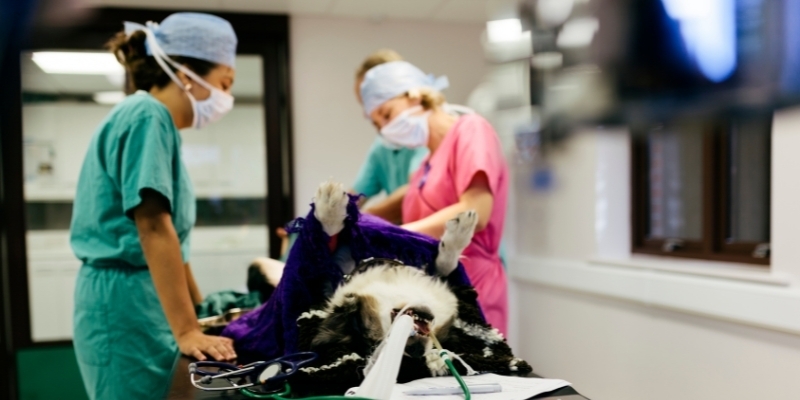With 80-90% of dogs, and over 90% of cats being routinely desexed in Australia, the majority of female pets will undergo a spey (female desexing procedure) at some point in their life.
Let’s shed some light on the technical details of this intricate surgical procedure and discuss how our team and pet owners can help ensure a smooth recovery for speyed pets.
What does a spey surgery involve?
The traditional spey surgery in Australia involves an incision through the midline of the pet’s belly to allow the veterinary surgeon to locate and tie off all attached blood vessels (to prevent bleeding) before removing the pet’s ovaries and uterus. The vet then closes up the pet’s abdomen using several layers of dissolving sutures.
How vets and nurses work together during surgery
During a spey surgery, a vet and veterinary nurse will work together to place the pet under general anaesthetic. The vet will then perform the surgery whilst the nurse monitors and maintains the ongoing anaesthetic (under the direction of the vet). The nurse also monitors the animal’s heart rate, breathing, body temperature, and other parameters such as blood pressure, to help ensure the safest procedure.
Pets will be prescribed several modes of pain relief, both during the spey surgery and post-operatively, to help them recover as comfortably as possible.
How you can help ensure a smooth recovery for your pet
To help your pet recover, we would advise:
- Administer pain relief according to the labelled instructions. If you feel your pet requires more pain relief, contact our team.
- Keep your pet rested for at least 10 days post-operatively. For dogs, this involves on-lead toileting walks only, whilst cats should be kept in a confined area to limit their activity.
- Check your pet’s wound daily and contact our team if you notice any discharge or increased swelling.
With our care during the spey surgery and yours after, we can help ensure that your pet’s recovery is a walk in the park. After all, a stitch in time saves nine (more puppies).

